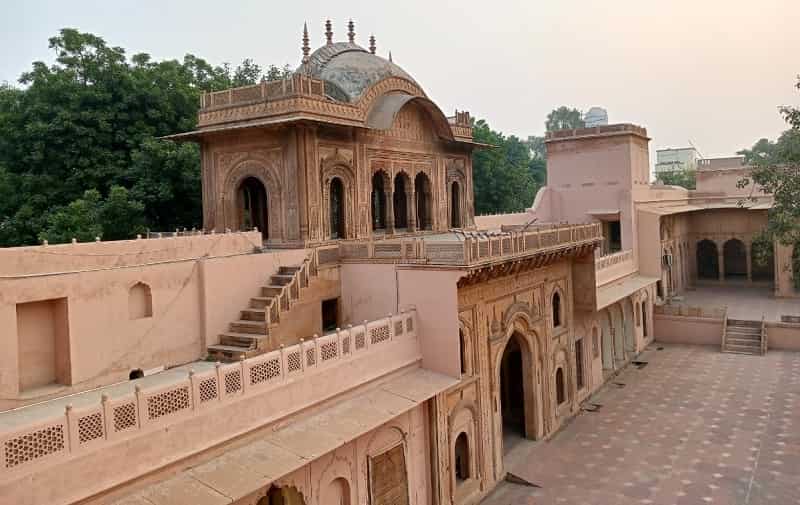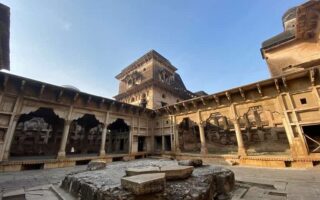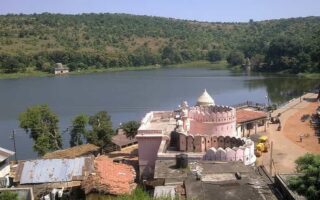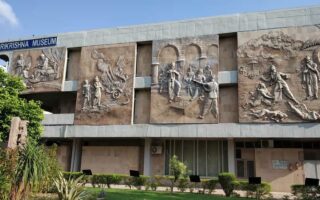Haryana is more of a countryside place, with more greens than the significant colors of History. Forts and palaces are remarked as emblems of historical importance, the icons of lifestyle and fondness of the ancient magnificent rulers, emperors and kings. They portray the way of existence of people from the ancient times. Forts display a great sense of art and architecture, culture and tradition of then, which is incomparable and invaluable. However, the state of Haryana is not as rich as Rajasthan or Maharashtra, in terms of this rich ancient fortress collection, yet there are quite a few forts which serve an ultimatum towards the avoidance of the tourists. When you are in Haryana, you cannot resist attending and being a part of the grandeur of forts in Haryana.
There are not many fortress attractions in Haryana, since most of them were desolated by the rulers in the latter years. The ones that still exist and are worth having a look at include only two names, the Ballabhgarh Fort and the Karna ka Qila Fort. Both of these deserve to be mentioned and applauded hugely with honor, as both of them hold the entire historical opulence of Haryana on their pillars. The Ballabhgarh Fort in Nahargarh surprises with its ancient architecture that belongs to the 17th century, currently a culturally essential and festive location, while the Fort of King Karna also adds to the momentous magnitude of Haryana. Let us take a glance at them individually, in further posts.
Ballabgarh Fort
- Address: Ambedkar Chowk, Ballabhgarh, Faridabad, Haryana 121001
Built by: Raja Nahar Singh - Built on: Around 1739 AD
- Timings: 9 AM to 5 PM
- Time required: 1 hour
- Entry fee: No entry fee

The previous posts must have talked about the overview of forts in Haryana. You might already be aware of the fact that there are two major forts in Haryana that are worth visiting. One of them is the Ballabhgarh Fort, built in the 17th century. The fort stands firm on the lands of Nahargarh in Faridabad, Haryana.
There is a legend behind the birth and existence of the Ballabhgarh Fort. The story of this fort is another example of rags- to- riches. The founding ruler of the fort, Raja Balram, was not a born king. He was a poor farmer, named Ballabh Singh. This opportunity of becoming a king was bestowed upon him by destiny, when he discovered two gold laden mules in his farm, one night. Thus, over the night he became rich, built this fort, and began being called Raja Balram. Hence, the fort is partially named after him, i.e. Ballabhgarh. Raja Nahar was a descendent of Raja Balram, after whom the town of Nahargarh is named.
After the initial construction, the fort was renovated several times, once by Raja Nahar as well, and for that , over 50 trained artisans and numerous artistic decors were imported to Haryana from the royal state of Rajasthan – the icon among all states with Indian fortresses. Ancient traditional architectures, hackneyed designs, and superior techniques were used at the time of both, building and renovating the fort. Renovations included repairing, white washing, coloring, and replacing the worn out white sand stones with newer ones. King Nahar also ordered to get the ancient historical monuments in the fort to be restored in their original splendor and patina. Renovation has brought the pristine magnificence of the fort back from the silent ruins, back to its original glory. The Ballabhgarh Fort is the most enchanting site of heritage today in Haryana.
There were several excavations in the vicinity of the Ballabhgarh fort, like ancient pottery sites and ruins of the Harappan civilization. A small ancient village is known to be in close proximity to the fort, which gives an astounding sight of ancient lifestyle and homely architecture. Also, the Ballabhgarh fort served well as a home to the Pandavas, the great characters from Mahabharata.
Raja Karna Ka Kila
- Address: 3 km from Thanesar, Kurukshetra
- Period -: Circa 400 BC to 300 AD & Medieval Culture
- Timings: 8 AM to 6 PM
- Time required: 45 minutes to 1 hour
- Entry Fee: No entry fee

This fort, as the name gives a clear idea, belongs to a ruler named Raja Karna, in Thanesar in the district of Kurukshetra, Haryana. The name here is ‘the Kila of Raja Karna’, but actually the fort is pronounced by the residents as ‘Raja Karna Ka Kila’. The greatest significance of this fort is that it holds traces of life during the Protohistoric period. Let us get more information about the fort. The Kila of Raja Karna is a massive mound structure, spanning about 5 km from Thanesar, towards the approximate southwest of it, in Kurukshetra. The general level of the ground sees the mound 10 m high above it. During the built up, there were excavations carried out, in which was revealed a three- fold sequence of historical importance.
There were quite a lot of excavation and findings done in the Kila of Raja Karna, since the time when the fort was left abandoned after the last ruler passed away. According to the findings, there are periods named after the consequent phases of excavations – period 1, period 2 and period 3. Period 1 finds that the mound of the Kila of Raja Karna seems to be belonging to the 4th century BC and served as the occupational center for them. Periods 2 marked the occurrence of metal and earthen ware, and the scripting of various languages, like Brahmi, and writing legend using it. Period 3 is known to have witnessed the use of lakhauri bricks and glazed ware in the pre- Mughal times. Plastering of the bricks with lime and using them was also signified in this period.
About 200 m away from the main mound, there’s another mound that revealed the habitations of the protohistoric living, which belonged to the later Harappan civilization. This mound brought to sight a 1 – 1.5 m thick soil topped complex structure of mud – bricks. This structure consisted of twin rooms with no roofs. A bigger room consisted of a refuge pit, a fire place, a corn bin, and an oven. Small rooms were squared and possessed a tiny entrance door in the southeastern wall. The bricks that have been used in the structures are about 400x20x10 cm in size. Crystal, agate, jasper, carnelian, steatite, etc. were found to have been used to make beaded architectures in the fort and the protohistoric civilization.
One who wishes to visit the Kila of Raja Karna in Haryana, can have Chandigarh as the nearest airport, Kurukshetra as the nearest railway head, and for those who choose to travel by road, the state offers a bus stop at Kurukshetra from where buses fetch you to drop by the fort.


